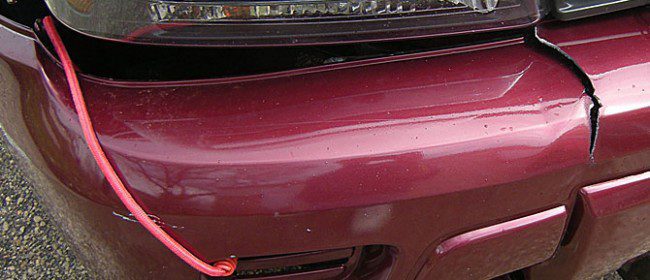Can You Fix A Cracked Bumper Paint

How to Fix Car Bumper Scratches. Fixing damaged plastic bumpers involves grinding, sanding, sculpting and painting. But it's worth the effort for repairs that would cost less than your deductible.
There oughta be a law: If there's a post in a parking lot—any post—it should be high enough to see when you're backing up. Unfortunately, the law we usually see applied is Murphy's, and the resulting body- damage repairs will cost just a few dollars less than your insurance deductible.
If you've dented your bumper, developed deep paint scratches or otherwise damaged your car, you may be surprised to discover that the cost to repair auto body mishaps.
And that's precisely the scenario we were faced with after trying to maneuver our trusty Honda Civic out of a tight space in a crowded mall parking lot. Advertisement - Continue Reading Below. A lot of people would first try to do what you shouldn't: Head to the local auto parts store for some el cheapo body filler and a can of matching spray paint. The technology of auto body parts has changed—and you'll need a completely different array of supplies to repair painted plastic parts than you would use to repair sheetmetal.
- Experts say you can tell a whole lot of intimate details about a person just by looking at them. It's not magic and it's not 100 percent. But it is science.
- How to Prep and Paint a Bumper - Automotive Bodywork Audi A4. Prior Experience: I had lots of rattle can experience, and lots of patience Cost: no real way to.
- Paint scratches, dents, scuffed.

Fortunately, there are a number of companies making repair and refinishing materials for plastic bumpers, as well as plastic fenders and door skins made from sheet molding compound. Scuff, clean and prep area with plastic prep solvent to remove dirt and oil, and promote adhesion. Bumper Mechanics Today, the actual . The part of the car's structure that's used for saving the vehicle's body from damage is well hidden behind a fairly large semirigid piece of painted plastic. Free Download Translation Chinese Thai Buffet on this page. This plastic covering is designed to deflect and deform easily when bumped. The theory goes that you can run into it lightly and the plastic will pop back into its original shape. However, really wallop it, especially with a hard or sharp object, and the plastic will abrade, cut or tear.
Various carmakers use different methods of attaching these plastic bumper covers. Because they are held in place with screws and tabs that fit into slots in the body sheetmetal, you may have to do some hunting around for all the fastening points of a typical fascia. On our damaged Civic, for example, there were screws behind metal caps near the trunk latch, as well as screws under the taillights and at the wheel wells. How To Setup Ics On Vista. Once they were removed, we were able to slide the bumper's tabs off a number of slots in the rear quarter panels. Look for screws or bolts under the trunk carpeting between the wheel and the rear bumper. You may also find fasteners hidden beneath or behind the bumper fascia.
This is not how you talk when you’re planning to ax a product. This is definitely the kind of talk you deliver when you’re launching a new Paint product.
Advertisement - Continue Reading Below. Grind a . If you have the fascia off the car, you can work indoors—but not in the basement because these chemicals can give off some pretty noxious fumes.
Read the labels carefully. Not all plastic bumpers are made from the same stuff. But with the fascia removed, it's easy to identify the type of plastic because it's stamped into the back side. Stamps of PP (polypropylene), PPO (polyphenylene oxide) and TPE (thermoplastic elastomer) indicate plastics that smear easily when ground or machine sanded.
Consult with the counterman at the auto paint store for the appropriate products. While the specific brand you use isn't critical, it is important that you stay with that same brand throughout the entire repair to be sure the products are compatible. Regardless of plastic type, prepping the fascia is the same: Begin by slightly scuffing the damaged area and cleaning it with plastic surface cleaner.
If the bumper is cut or torn through completely, make sure to scrub the inner and outer surfaces. After rinsing and letting the surface dry, wipe the area with prep solvent. When wiping with this material, go in only one direction because going in two directions simply drags contaminants back into the repair.